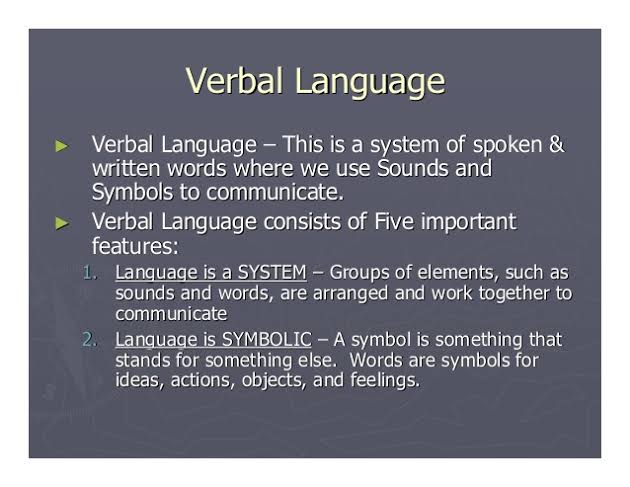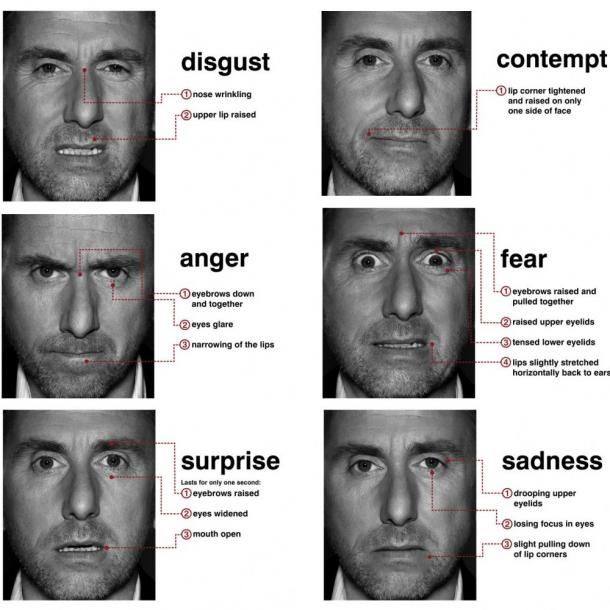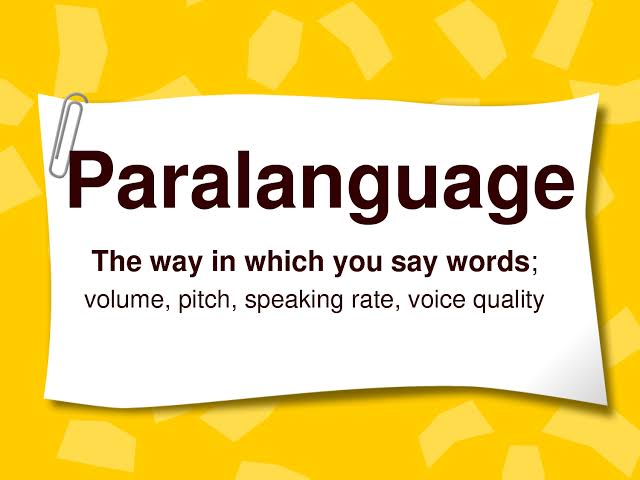Q.:- What is language of communication?
Or
What is role of language in process of communication?
Ans.:-
Introduction:-
Language is one of unique possessions of man. It distinguishes man from animals. It is thes system of words, signs, symbols and sound that is used by a person to communicate her/his emotions, feelings, ideas, desires and wants. It is the method of human communication in a conventional and structured way.
Language plays an important role in the process of communication. It facilitates better coordination and understanding. Both language and communication are inter-related and dependent on each other. It is essentially required in verbal communication, but one can also communicate without spoken or written words. Signs, symbols and body movements also contain certain meanings and form a language which is called non-verbal language. Hence, we can say that communication is possible through:
- verbal language
- non-verbal language
Verbal Language:-
Verbal language is the medium of expression that is used to convey oral and written messages. It consists of words, phrases and sentences which contain the symbols of letters, numbers and punctuation marks. There are different symbols for written letters and oral expressions. For example, the written symbols of English language are called 'English alphabets, while the pronunciation of letters is represented by ‘phonetic symbols? These symbols have universal meaning and are governed by set rules of grammar. Verbal language can be divided into two categories:
Speech:-
Speech is the first and foremost activity of a language. Child learns to speak first, and develops the ability to read and write much later. It is vocalized form of human communication. The speaker conveys a message through spoken words and the listener understands the message through speaking and listening channel. It requires the knowledge of correct pronunciation of words. The origin of speech is unknown and subject to debate and speculation.
Writing:-
Writing is the representation of language with the help of written signs and symbols. The writer uses the script of language to write the message. S/he uses pencil-paper, chalk-board, or print media to do so; and the reader understands the message through reading and decoding process. Knowledge of spellings is an essential requirement for writing. Written material remains for ever unless it is knowingly destroyed. It can be preserved for future reference and used as evidence.
Non-verbal Language:-
We generally believe that communication is not possible without spoken or written symbols, but non-verbal language plays a vital role in the process of communication. The studies reveal that, in our social and professional life, we use non-verbal language more than verbal language. It includes:
Body language-
Human body plays an important role in the process of communication. All the body movements, such as expressions, gestures, postures etc., are guided by our feelings and thought processes. Movement of different body parts, such as hands, feet, eyes, shoulders, head etc., express the feelings and emotions of a person. All the body movements act as symbols and contribute to the meaning of a message. For instance, nodding head up and down conveys agreement; shaking head from side to side means disagreement; movement of hand is a mark of greeting. This movement forms a language which is known as body language. It is a prominent and an important medium of non-verbal communication. An intelligent observer can understand this language easily. It can be learnt consciously as well as unconsciously.
Kinesics:-
Elements of Body Language:-
a) Head: Head is the part of body that communicates in different ways. Holding the head high marks honour, confidence and self-respect, while lowering of head
indicates the feeling of politeness and modesty. Jerking conveys rejection, while nodding communicates appreciation, understanding, interest, agreement, or confirmation. ⬇️
(b) Eye: There is a saying: “Eye is extension of brain and window of soul" Eye movement is an important element of body language and expresses feelings, thoughts, emotions and intention of a person. Eyes express how deeply a person is involved in the conversation. Students' looking at the teacher, while s/he is teaching, implies that they are paying attention, but if they are watching outside the window, it shows their inattentiveness. ⬇️
Eye contact is of paramount importance in face-to-face interaction. Long eye contact reflects interest, confidence and pride whereas brief eye contact indicates disinterest, nervousness and embarrassment. Eye contact is a means of gaining feedback and enables the speaker to alter, adjust and reframe his message. Language of eye is universal in almost all the cultures. ⬇️
(c) Face: Face is the most expressive part of the body. It expresses what is going on within the mind of an individual. Whatever a person feels deep inside is reflected on her/his face. The lines of forehead, the muscles of cheeks, the eyebrows and lips communicate the feelings, thoughts and intention of a person very well. In general,face and facial expressions can be said the true index of one's emotional and thinking behavior. When one is perturbed, her/his face reflects the level of anxiety and stress. Similarly, when one is in a happy or joyful mood, her/his facial expressions convey the same to others. It is why we can easily conclude that one is angry, fearful, jealous, astonished or showing love, sympathy, or hatred. Much of the language of facial expressions is almost similar and universal all around the world. ⬇️
(d) Posture: Posture refers to the way of standing, sitting, lying and walking. The wayi inwhich a person sits, stands or walks makes the difference. Standing or sitting erect leaning forward or backward make an immediate impression on the mind ofother person(s). Erect posture conveys confidence, bent posture reflects thinking, and relaxed posture indicates balanced state of mind. Drooping shoulders and protruding stomach convey that the person is discouraged, tired and worn out. Posture plays an important role in oral communication. Audience judge the speaker's personality from her/his posture whether s/he is vibrant, alive, dynamic, nervous, confident or self assured. The speaker can also gauge the success of her/his communication by observing the posture of listener(s). ⬇️
(e) Gestures: Gestures refer to 'the motion of hands or other body parts to emphasize certain point. The movements of body parts - hands, arms, legs, head, etc., -contribute to the meaning of oral messages. For example, the movement of hands, while one is delivering a lecture or making a presentation, reinforces the communication; while shuffling of feet communicates nervousness. Proper coordination of speech and gestures enhance the effectiveness of communication manifold. ⬇️
(f) Personal Appearance: Physical appearance includes a person's way of dressing, hairstyle, wearing makeup, wearing shoes, etc. Good appearance attracts the attention of everybody and acts as a significant non-verbal cue. A person is judged on the basis of her/his clothes, hair style, personal hygiene, body odour, and even skin tone. ⬇️
That's the reason that some organizations prescribe a kind of dress to wear on certain occasions. Personal appearance also plays an important role during public speaking, Personality of the speaker leaves an immediate impression and the audience forms an opinion about her/him even before s/he starts speaking. For example, the speaker dressed in suit, tie and polished shoes communicates that s/he believes in formal and well structured programme; whereas a person loose or casual dress communicates that s/he is quite informal and careless to many things. ⬇️
Sign Language-
Communication is the process in which people exchange messages and meanings through mutually understandable signs, signals and symbols. These can be audio as well as visual. Audio signals include alarm clocks, sirens, bells, etc., while visuals include pictures, drawings, posters, maps, marks, colours, or so.
They are quite efficient in conveying the message. For example, a buzzer streamlines the start of working hours of an organization. Similarly, the red colour of traffic light signals the drivers to stop their vehicles. These signs and signals have their particular meaning and act as a language which is called sign language. It is a very popular and effective means of communication to communicate with deaf and dumb, intellectually retarded, and uneducated persons.
Paralanguage-
The term paralanguage consists of two words: 'Para, meaning 'like' or 'similar to'; and language, the mode of communication. Paralanguage literally means like language, but actually it is not verbal. However words are used in paralanguage, but the language focuses on 'how rather than 'what. It lays stress on how the words are spoken, rather than on their literal meaning. It aims at the tone of voice with which something is said. For example, a louder voice suggests anger or assertion, while a whisper indicates secrecy.
Paralanguage is non-verbal because it does not consist of words in literal sense, but it is close to verbal communication because it shows how the words are spoken or uttered. Actually it is a middle path between verbal and non-verbal communication. It is an important supplement to verbal communication because it makes oral communication effective and complete.
Mainly paralanguage is a part of non-verbal communication. It emphasizes on voice nuances. It has the ability to modify or nuance the meaning, pitch, volume, emotion, or so. It can be used consciously as well as unconsciously. People normally use paralanguage multiple times a day even without being aware that they are doing so.
Paralinguistic properties of speech play an important role in human communication. Speech has non-verbal elements- voice quality, speaking style, speed, accent, volume, pitch, tone, rhythm, pause, modulation, fluency, intonation, and stress. Paralanguage studies how a speaker speaks. The study includes non-verbal factors: the tone or pitch of voice (high or low), the pace (fast or slow), the volume (loud or soft), the emphasis or stress on words, break in the sentence, faltering, hesitation, and so on. These factors contain the following elements:
- Word stress: The stress placed on a particular word in a phrase or a sentence is called 'word stress! It helps to make out whether an utterance is a statement, a question, a request, or an order. For example, the sentence- Shut the door-can be used as a request as well as an order. If the word 'shut' is stressed, it may be taken as an order; but if the word 'door' is stressed, it may be taken as a request.
- Intonation: Intonation is related to the rise and fall of the pitch of the voice. Pitch plays an important role in intonation. Pitch is determined by the frequency of vibration of the vocal cords. Each word is made up of one or more than one syllables. For example, the word captain is made up of two syllables- cap and tain. In the words, having two or more syllables, all the syllables are not equally prominent. Sometimes one of them is pronounced with greater prominence than the other(s). That syllable is said to be accented. It may be stressed with the help of greater breath force, muscular effort, and amplitude of the vibration of the vocal cords. For example, the syllable 'cap' is stressed in the word captain.
Other than vocal characteristics, paralanguage also includes facial expressions, eye movements, hand gestures, etc. It is sometimes related to non-phonemic properties, such as laughing, crying, whispering, sighing, groaning, sneezing, or so.
Proxemics/ Space Distancing-
The word 'proxemics' has been derived from the word 'proximity' which means 'the region close around a person. The space or distance that a person chooses to maintain from others is also a part of non-verbal communication. All of us create imaginary inner and outer circles which are based on the relations. The space marks the relationship between the two persons. The different types of spaces are as follows:
- Intimate Space: It is the inner most circle. We allow only selected persons, such as family members or close friends to enter into it. The intimacy or closeness conveys the relationship between the two.
- Personal Space: We allow common friends, colleagues and co-workers to enter into this space.
- Social Space: It is the outer-most circle. All the official and professional relationships are allowed to enter into it.
- Public Space: Everybody can enter into this space.
The space also depends on the situation. More distance is maintained between the speaker and the listener(s) in formal situation, while there will be less distance in informal situation. It also includes a reference to standing and seated positions. The person, in the superior or commanding position, usually stands and others remain seated. We can find the example from organizational meetings. The superior talks to the subordinates in standing position and the subordinates remain seated. Proxemics is the study of this territory or distance.
Chronemics/ Time Language-
Chronemics refers to the study of usage of time. It involves the meaning given to the time dimension. It deals with the manner in which one structures one's time and interactions. Time is an important component of non-verbal communication. It reveals the character of a person. Work done in time speaks about the worth of a person. Completion of task within specified time communicates sincerity, reliability and hard work, whereas habitually late coming or absenteeism communicates unreliability and laziness of the person. For example, a student's punctuality reflects her/his sincerity and interest in the study, whereas lateness conveys insincerity and disinterest.
Punctuality is equally important in business world. Speed and punctuality affect the image of an organization. Delay communicates mismanagement and people lose faith in the organization, while completion of work on time communicates smooth management and builds a positive corporate image.













































3 comments
Wonderful blog 👍👍😊😁
ReplyDelete👍👍👍👍👍👍👍Amazing Blog
ReplyDeleteBhut bhadiya
ReplyDelete